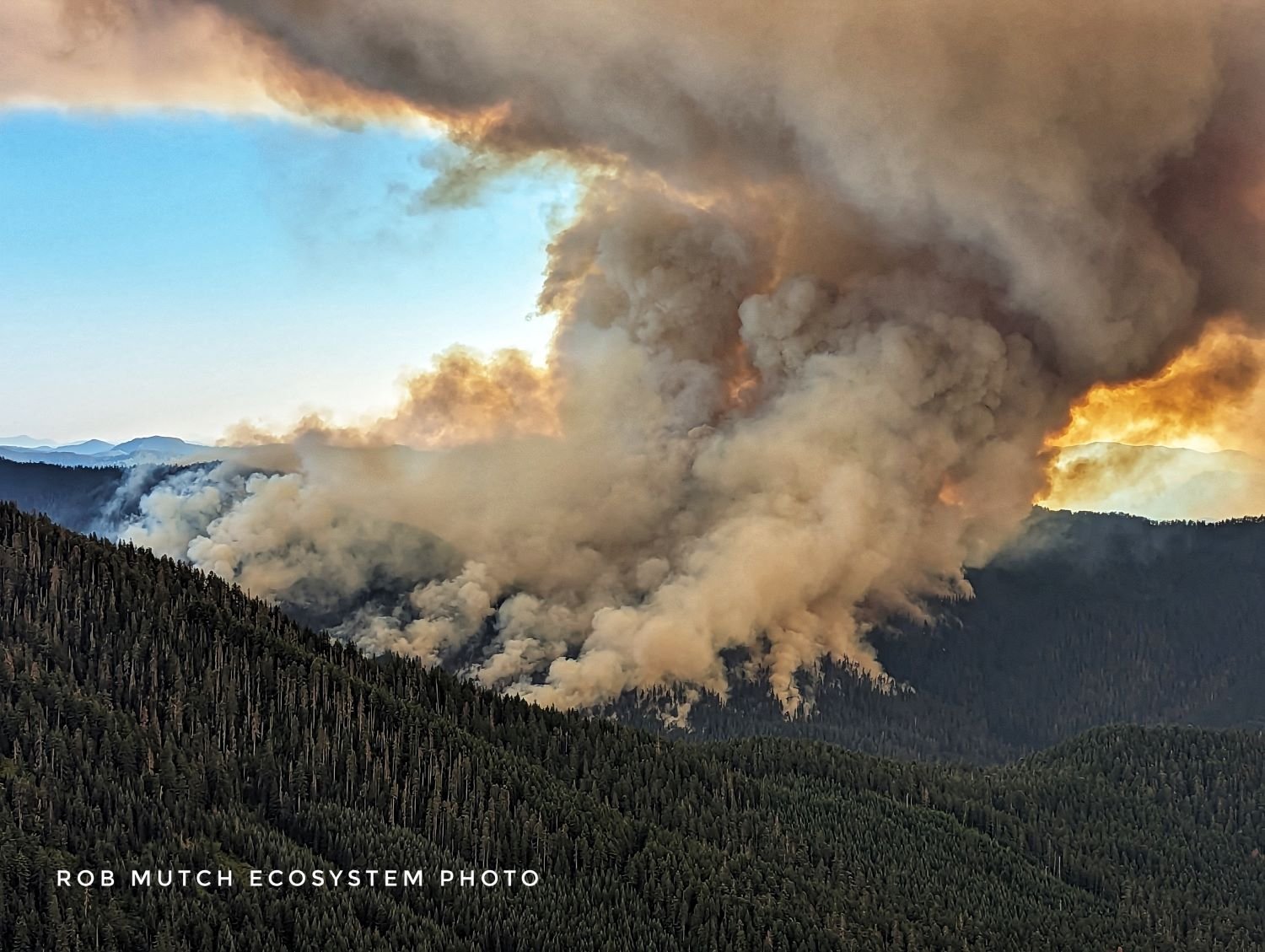
24. Lookout Creek
Summary
Length 3.6 miles one way (Note: trail reconstruction/maintenance not yet complete)
Difficulty Moderate at both ends; challenging in the middle until trail is fully maintained
Season Spring to autumn
Elevation range 2,430 feet - 3,440 feet
Human imprint Minimal
Information Willamette National Forest, McKenzie River Ranger District
Primary old growth features
Burned old-growth forest (2023), but with substantial old-tree survivors near both trailheads.
Description
Until recently, the old forest in upper Lookout Creek basin was one of the largest intact blocks of classic old growth left in the Oregon Cascades. In fact, research plots in the forest along and near the trail were once used to define the characteristics of old-growth forests in seminal publications from the 1980s. Located within the H.J. Andrews Experimental Forest, the entirety of the quintessential forest along the Lookout Creek Old-Growth Trail burned during the Lookout Fire in the late summer of 2023. Although the forest is no longer in an old-growth condition, there are substantial fire survivors along both ends of the trail, and the hike is an interesting and instructive example of wildfire effects in an old forest. The robust research program at the experimental forest will undoubtedly be documenting fire effects and forest recovery for decades.
Prior to the fire, a hike on the Lookout Creek Old-Growth Trail was a journey into the forest primeval. The path penetrated a large and remote patch of ancient forest seemingly well protected by steep ridges to the east and south, and followed the natural contours of the land along the north slope of Lookout Mountain. Beautiful, archetypal examples of Douglas-fir and western hemlock old growth were clustered near both trailheads on highly productive riparian soils. Impressive western redcedar were scattered throughout, and particularly notable near two debris-torrent chutes close to the midpoint of the trail. Abundant dead wood and deep layers of duff and organic matter carpeted the forest floor.
The Lookout Fire was ignited by a lightning strike on August 5, 2023 in an unfortunate location near the top of Lookout Mountain. The summer had been hot and dry for an extended period, and fuel moisture was very low. Fire crews had trouble from the very beginning due to difficult access, steep slopes, and heavy fuels, and soon backed off from direct attack. The fire eventually burned over 25,000 acres, including approximately 70% of the experimental forest.
Much of the fire burned at low to moderate severity, although there were several afternoons when the fire burned more severely when afternoon winds picked up. But even where the fire stayed on the surface, very heavy fuel loads in the old growth often meant high consumption of surface duff and litter layers, and mortality of nearly all trees other than some large, thick-barked Douglas-fir. The result is a patchwork of green and dead patches in the overstory, and a heavily burned understory with loss of soil organic layers in many areas.
Most legacy-tree survivors are clustered near the two trailheads located three miles apart on Forest Road 1506. From the lower trailhead, follow the trail down to Lookout Creek and head uphill on the steep slopes south of the bridge. The trail levels off a mile or so from the trailhead and contours across the slope below Lookout Mountain out of sight but parallel to Lookout Creek. Recross Lookout Creek and switchback upslope until reaching the upper trailhead. Two debris-torrent chutes cross the trail midway requiring extra caution.
Many large, fire-scorched Douglas-fir are visible along the first mile of trail. Most striking are places where fire consumed deep, duff mounds around the base of large trees exposing roots formerly growing in the duff. Orange fire mosses, trees weeping sap, and a wide variety of scorched-wood sculptures are new features of the recovering forest. The central part of the trail burned severely, with relatively few live trees left leaving a sea of snags. The trail enters another area with high big-tree survivorship near the upper trailhead. Here, some large western hemlock also made it through the fire, some remarkably so considering the degree of tree root exposure and damage.
Note: Various painted trees, flagging, marking pins, and other signs indicate the proximity of long-term research plots and sensors. Please stay on the trail to avoid damaging these areas.
30 years of change
The forest has been radically transformed by the Lookout Fire (2023.)
How to get there
Travel State Route 126 approximately 48 miles east of Eugene and turn left (north) onto FR 15 heading toward Blue River Reservoir. Turn right onto FR 1506 after 3.4 miles. The lower trailhead is on the right 7 miles later, just past the junction with Carpenter Mountain Road (FR 350). The upper trailhead is another 3 miles up FR 1506, also on the right.
--------------------------------------------------------------------------------------------------------------------------
SIDEBAR
H. J. Andrews Experimental Forest
The H.J. Andrews Experimental Forest was established in 1948 and is jointly managed by the USDA Forest Service and Oregon State University. The experimental forest has been a major site of forest, stream, and watershed research, and is a charter member of the Long-Term Ecological Research (LTER) network sponsored by the National Science Foundation. Pioneering work describing old-growth Douglas-fir forests and the habitat needs of the northern spotted owl was initiated here in the late 1960s. Studies are conducted on the Andrews to better understand vegetation development and mortality, watershed hydrology, carbon dynamics, fire and landslide history, climatic patterns, stream ecology, insect ecology, wildlife habitat use, and many other topics (visit www.fsl.orst.edu/lter for more information).
--------------------------------------------------------------------------------------------------------------------------

Beginning of Lookout Fire, from Carpenter Mountain Lookout, August 2023. Credit Rob Mutch , Ecosystem Photo

Douglas-fir & western redcedar pre-fire

A thick-barked survivor
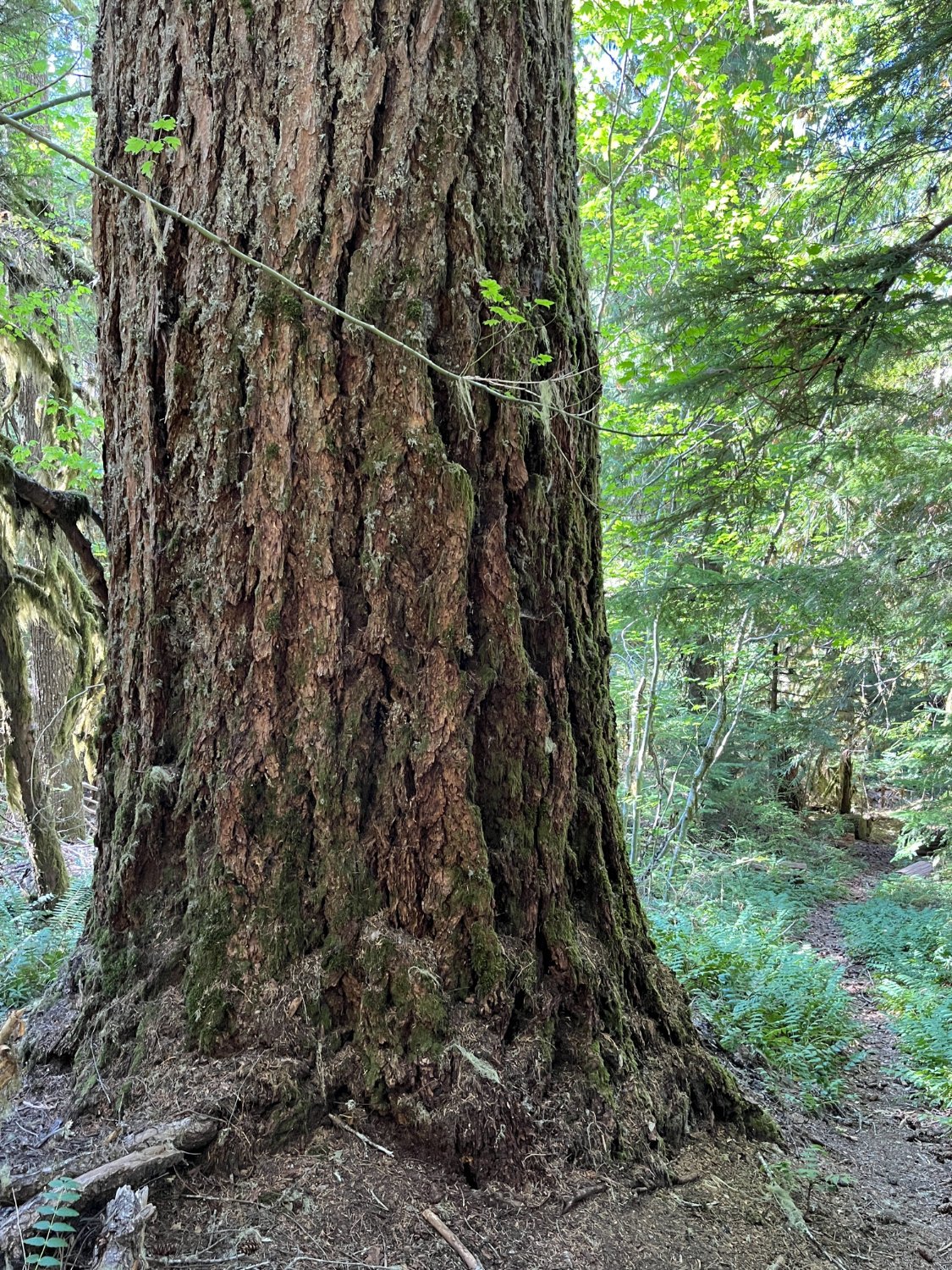
Big Douglas-fir before the fire

Jim wonders why this giant didn't make it

Western hemlock pre-fire

Western hemlock skeleton

Western redcedar pre-fire

Too hot to survive in this location
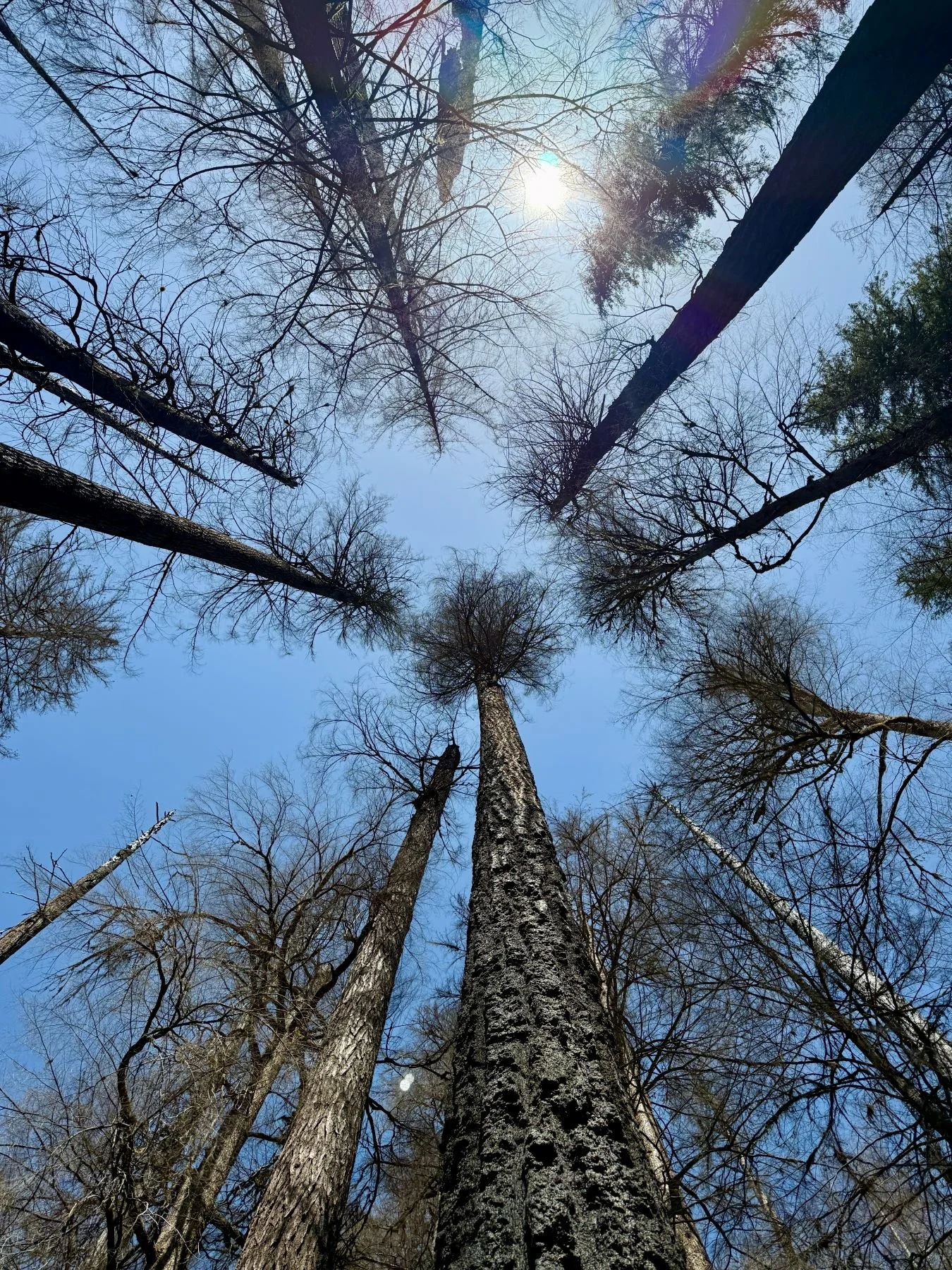
High fire severity

Death by root damage
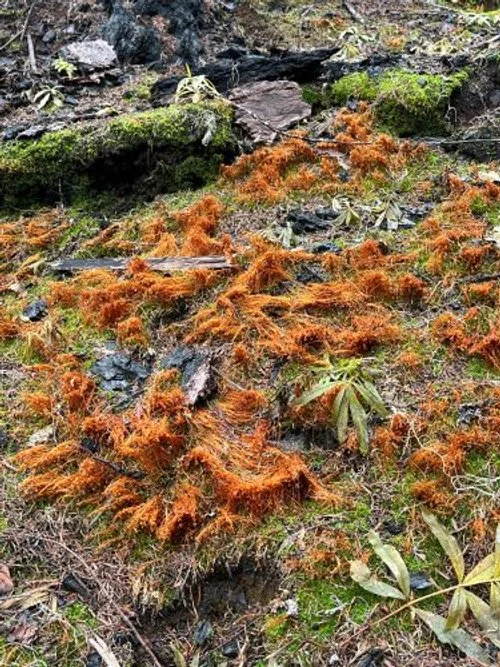
Fire moss
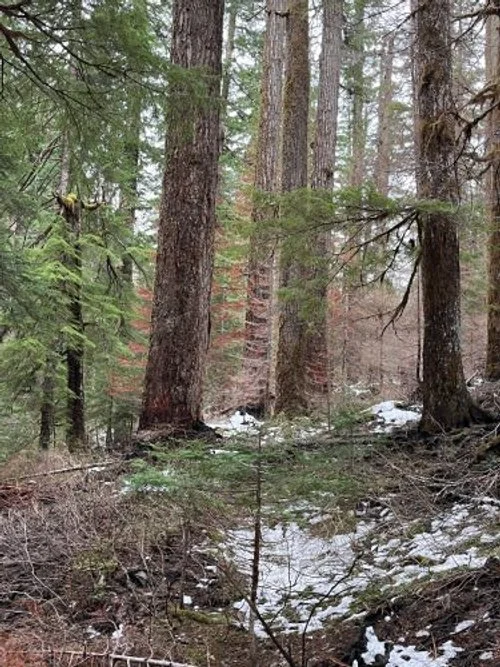
Surviving western hemlock
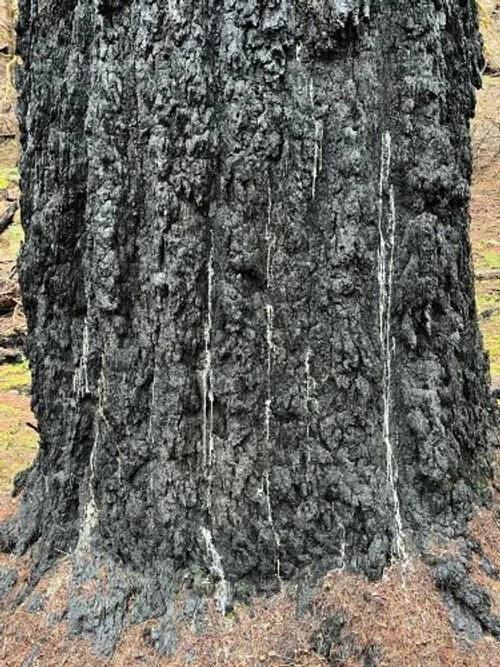
Weeping Douglas-fir
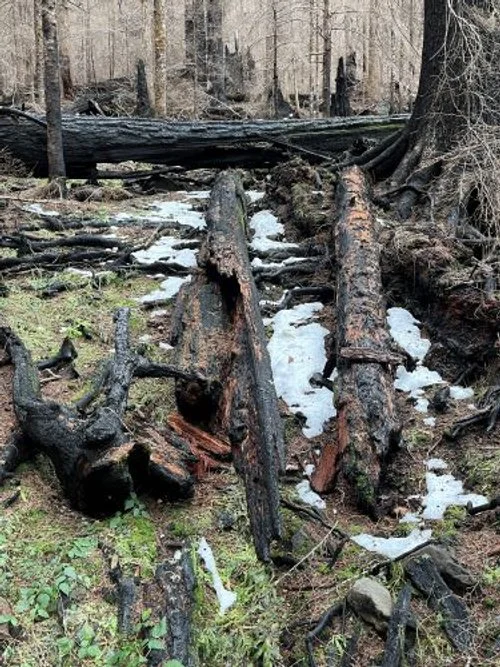
Where has the organic layer gone?

Accumulating down wood
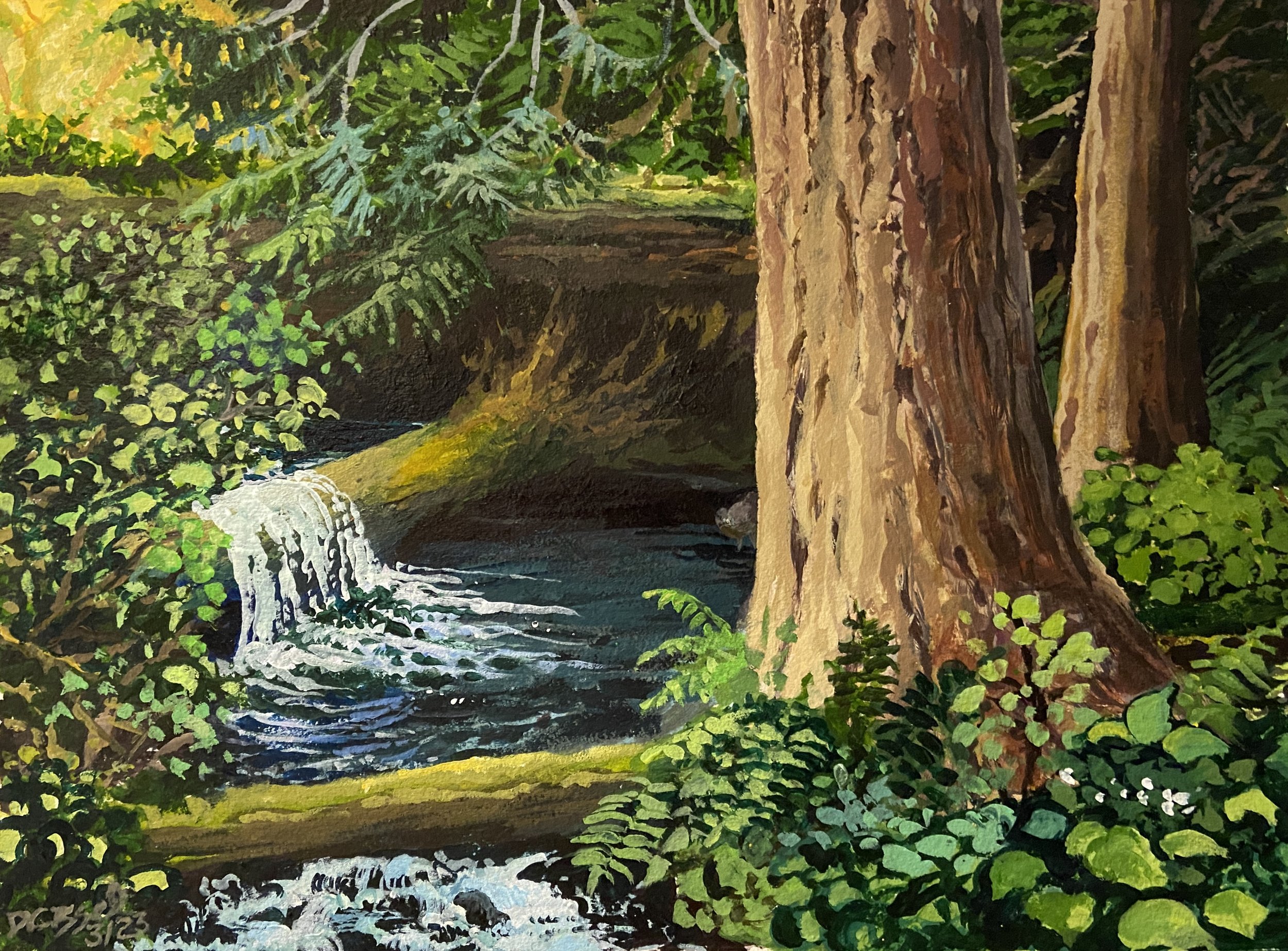
Lookout Creek, Acrylic on watercolor paper, 2023 Diane Cissel
